Mushrooms are an incredibly diverse and versatile cooking ingredient, cherished in cuisines around the world for their unique flavors, textures, and nutritional benefits. When you walk into a grocery store, the variety of mushrooms available can be overwhelming. Understanding the differences between these varieties and their best uses can help you make informed choices for your culinary creations. In this blog post, we will explore the most common types of mushrooms found in grocery stores and their common uses.
White Button Mushrooms
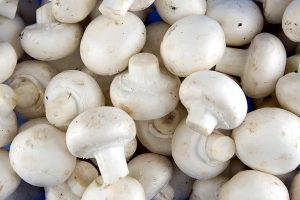 Description: White button mushrooms are the most commonly consumed mushroom in the United States. They have a mild flavor and a smooth, white cap. These mushrooms are harvested at an early stage of development, which contributes to their delicate flavor and texture.
Description: White button mushrooms are the most commonly consumed mushroom in the United States. They have a mild flavor and a smooth, white cap. These mushrooms are harvested at an early stage of development, which contributes to their delicate flavor and texture.
Common Uses:
- Salads: White button mushrooms can be sliced and added to fresh salads for a subtle earthy flavor.
- Soups and Stews: They are a great addition to soups and stews, adding both flavor and texture.
- Stir-Fries: Their mild flavor makes them versatile enough to be included in a variety of stir-fry recipes.
- Pizza Toppings: White button mushrooms are commonly used as a pizza topping, either raw or sautéed.
Cremini Mushrooms
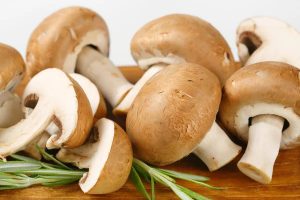 Description: Cremini mushrooms, also known as baby bellas, are a brown variety of the common white button mushroom. They are slightly more mature than white buttons and have a firmer texture and deeper flavor.
Description: Cremini mushrooms, also known as baby bellas, are a brown variety of the common white button mushroom. They are slightly more mature than white buttons and have a firmer texture and deeper flavor.
Common Uses:
- Roasting: Cremini mushrooms hold up well to roasting, developing a rich, savory flavor.
- Grilling: They can be grilled on skewers or alongside meats and vegetables.
- Sauces: Their deeper flavor makes them ideal for use in sauces, particularly those served with beef or pork.
- Stuffing: Creminis are the perfect size for stuffing with cheese, herbs, and breadcrumbs.
Portobello Mushrooms
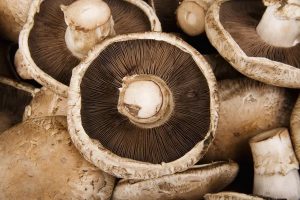 Description: Portobello mushrooms are the mature form of the cremini mushroom. They have a large, flat cap and a meaty texture, making them a popular meat substitute in vegetarian dishes.
Description: Portobello mushrooms are the mature form of the cremini mushroom. They have a large, flat cap and a meaty texture, making them a popular meat substitute in vegetarian dishes.
Common Uses:
- Grilling: Portobello mushrooms are often grilled whole and used as a meat substitute in burgers.
- Stuffing: Their large size makes them ideal for stuffing with a variety of fillings.
- Roasting: Roasted portobello mushrooms develop a rich, umami flavor that pairs well with many dishes.
- Sautéing: They can be sliced and sautéed for use in pastas, salads, and stir-fries.
Shiitake Mushrooms
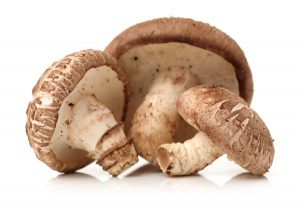 Description: Shiitake mushrooms have a distinctive umbrella-shaped cap and a rich, savory flavor. They are commonly used in Asian cuisine and are prized for their umami taste.
Description: Shiitake mushrooms have a distinctive umbrella-shaped cap and a rich, savory flavor. They are commonly used in Asian cuisine and are prized for their umami taste.
Common Uses:
- Stir-Fries: Shiitake mushrooms add a deep, savory flavor to stir-fries and other Asian dishes.
- Soups: They are a popular addition to soups and broths, particularly in Japanese and Chinese cooking.
- Sauces: Shiitakes can be used to enhance the flavor of sauces and gravies.
- Sautéing: Sautéed shiitakes make a delicious topping for rice, noodles, and vegetables.
Oyster Mushrooms
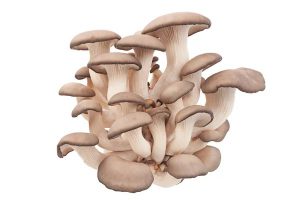 Description: Oyster mushrooms have a delicate texture and a mild, slightly seafood-like flavor. They grow in clusters and come in a variety of colors, including white, gray, and yellow.
Description: Oyster mushrooms have a delicate texture and a mild, slightly seafood-like flavor. They grow in clusters and come in a variety of colors, including white, gray, and yellow.
Common Uses:
- Sautéing: Oyster mushrooms are excellent for sautéing with garlic and herbs.
- Stir-Fries: They add a subtle flavor and tender texture to stir-fry dishes.
- Soups: Oyster mushrooms are a great addition to soups, adding both flavor and texture.
- Grilling: They can be grilled and used in a variety of dishes, including tacos and sandwiches.
Enoki Mushrooms
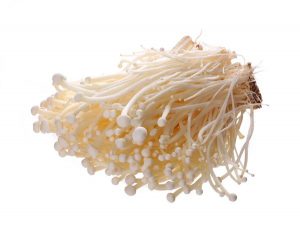 Description: Enoki mushrooms are long and thin with small, white caps. They have a crunchy texture and a mild, slightly fruity flavor.
Description: Enoki mushrooms are long and thin with small, white caps. They have a crunchy texture and a mild, slightly fruity flavor.
Common Uses:
- Salads: Enoki mushrooms can be used raw in salads, adding a crunchy texture.
- Soups: They are often used in Asian soups, such as miso soup and hot pot.
- Garnishes: Their delicate appearance makes them a popular garnish for a variety of dishes.
- Stir-Fries: Enoki mushrooms can be added to stir-fries for a unique texture.
Maitake Mushrooms (Hen of the Woods)
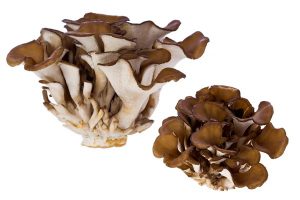 Description: Maitake mushrooms, also known as hen of the woods, have a distinctive ruffled appearance and a rich, earthy flavor. They grow in large clusters and are highly prized in both culinary and medicinal contexts.
Description: Maitake mushrooms, also known as hen of the woods, have a distinctive ruffled appearance and a rich, earthy flavor. They grow in large clusters and are highly prized in both culinary and medicinal contexts.
Common Uses:
- Roasting: Roasting maitake mushrooms brings out their rich, savory flavor.
- Sautéing: They can be sautéed and used in a variety of dishes, from pasta to rice.
- Soups: Maitake mushrooms add depth and flavor to soups and stews.
- Grilling: Grilled maitake mushrooms make a delicious addition to salads and sandwiches.
Chanterelle Mushrooms
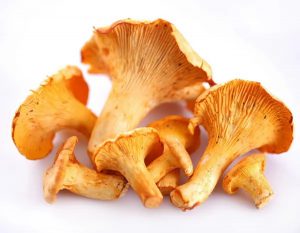 Description: Chanterelle mushrooms are trumpet-shaped and have a delicate, fruity flavor with hints of apricot. They are a prized ingredient in gourmet cooking.
Description: Chanterelle mushrooms are trumpet-shaped and have a delicate, fruity flavor with hints of apricot. They are a prized ingredient in gourmet cooking.
Common Uses:
- Sautéing: Sautéed chanterelles make a luxurious addition to pasta dishes and risottos.
- Soups: They add a unique flavor to creamy soups and bisques.
- Egg Dishes: Chanterelles pair well with eggs and are often used in omelets and frittatas.
- Garnishes: Their beautiful appearance makes them a popular garnish for upscale dishes.
Morel Mushrooms
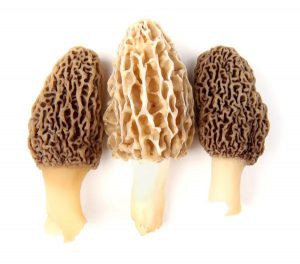 Description: Morel mushrooms have a distinctive honeycomb appearance and a nutty, earthy flavor. They are highly sought after by chefs and foragers alike.
Description: Morel mushrooms have a distinctive honeycomb appearance and a nutty, earthy flavor. They are highly sought after by chefs and foragers alike.
Common Uses:
- Stuffing: Morels can be stuffed with a variety of fillings for an elegant appetizer.
- Sautéing: They are often sautéed with butter and herbs and served as a side dish.
- Soups and Sauces: Morels add a rich, earthy flavor to soups and sauces.
- Pasta Dishes: They can be added to pasta dishes for a gourmet touch.
Porcini Mushrooms
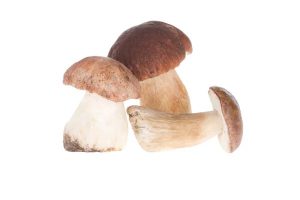 Description: Porcini mushrooms have a deep, nutty flavor and a dense, meaty texture. They are commonly used in Italian and French cuisine.
Description: Porcini mushrooms have a deep, nutty flavor and a dense, meaty texture. They are commonly used in Italian and French cuisine.
Common Uses:
- Risottos: Porcini mushrooms are a classic ingredient in risottos, adding a rich, earthy flavor.
- Pasta Dishes: They pair well with pasta, particularly in creamy or tomato-based sauces.
- Soups and Stews: Porcinis add depth and complexity to soups and stews.
- Drying: Dried porcini mushrooms are a pantry staple and can be rehydrated for use in a variety of dishes.
Mushrooms are a versatile and nutritious ingredient that can enhance the flavor and texture of a wide variety of dishes. From the mild, subtle flavor of white button mushrooms to the rich, earthy taste of porcini mushrooms, each variety brings its own unique qualities to the table. By understanding the characteristics and common uses of these mushrooms, you can make more informed choices and elevate your culinary creations.
 Next time you’re at the grocery store, consider trying a new type of mushroom and experimenting with its uses in your kitchen. Whether you’re making a simple sauté, a hearty soup, or a gourmet dish, mushrooms can add depth, flavor, and nutrition to your meals. Happy cooking!
Next time you’re at the grocery store, consider trying a new type of mushroom and experimenting with its uses in your kitchen. Whether you’re making a simple sauté, a hearty soup, or a gourmet dish, mushrooms can add depth, flavor, and nutrition to your meals. Happy cooking!
Bill Rice is Founder and Co-Publisher of the Great Family Cookbook Project, a website that helps families and individuals collect, preserve and share food memories by creating their own printed personal cookbooks. He is the author of The Wellfleet Oyster Cookbook and the Cape Cod Cocktail Cookbook (Available on Amazon), both created using FamilyCookbookProject.com. He is also editor of the Donovan Family Cookbook, now it’s third printing and is an avid genealogist tracing his family back to the 1600’s.
Follow Family Cookbook Project on Facebook, Instagram, Twitter and Pinterest!
